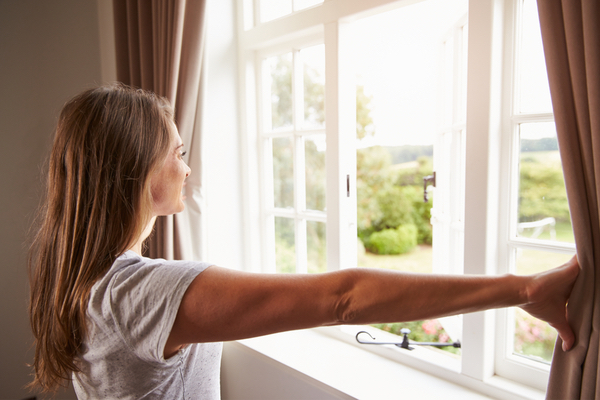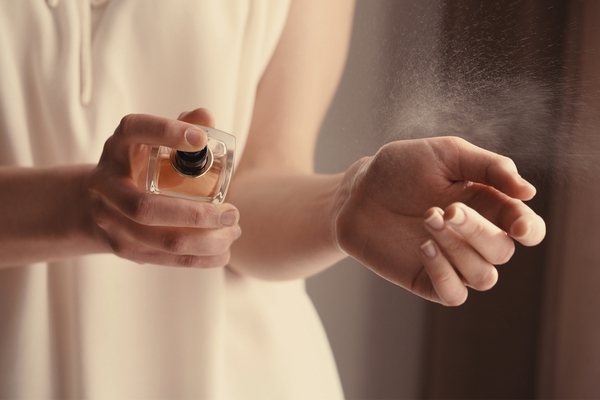With autumn around the corner, it’s only natural that you’ll begin to spend more time indoors, making now a great time to upgrade the air quality in your home or office so you stay fit and healthy.
To feel healthy, happy and youthful, the secret is in the air you breathe. But we’re not just talking about taking in lungsful of fresh air when on a country walk. We mean the air you breathe every day: in your home and at work.
But surely all harmful pollution is outside? Not so, according to Stephen Holgate, professor of immunopharmacology at Southampton University (southampton.ac.uk), who advises the Royal College of Physicians on air quality.
Risk of asthma
‘Many people are unaware that the air inside some homes is more polluted, and potentially more dangerous, than the atmosphere outside,’ he says. ’This leads to an increased risk of asthma and chronic obstructive pulmonary disease (COPD) as well as colds, coughs, headaches, nausea, hay fever and irritated throats, noses and eyes,’ says Stephen.
‘Longer-term exposure has been linked with liver and kidney disease, cancer and central nervous system (CNS) damage,’ he adds. ‘Air pollution has also been linked with cardiovascular disease, diabetes, dementia and even obesity.’
Air quality tests by environment charity Global Action Plan found pollution inside some homes in London, Pontypridd, Liverpool and Lancaster to be 3.5 times worse than outdoors. ‘What’s more, over a 24-hour period it peaked at levels 560 times higher,’ says chemist and medical herbalist Dr Chris Etheridge (chrisetheridgeherbalist.co.uk).
Ageing your skin
Your skin can also be affected by poor air. ‘Indoor pollution blocks pores, causes blackheads and acne, increases wrinkles and causes skin conditions such as dermatitis and eczema, and even skin cancer,’ notes skin specialist Katharine Mackenzie Paterson (kmpskin.com).
‘Very fine airborne dust and debris, known as particulate matter or PM, triggers oxidative stress. This leads to skin ageing, pigmentation and wrinkles. Although it’s usually linked to traffic pollution, a recent study found damagingly high levels of
PM in homes, too.’
So what’s causing it? We take a look at the causes, plus steps you can take to ensure each breath you take is a healthy one.
 PESKY POLLUTER: Mould, fungal spores and bacteria.
PESKY POLLUTER: Mould, fungal spores and bacteria.
SOURCES: Fridge shelves, bathroom tiles, window frames.
WHY IS IT BAD? ‘Moulds, fungal spores and bacteria are respiratory irritants and causes of asthma and other inflammatory respiratory diseases,’ says Stephen. But they
can also cause health problems involving the CNS and the immune system, according to researchers from the Progressive Healthcare Group.
They release toxic chemicals that can affect your balance, vision, memory, mental performance and even grip strength, say researchers at Keck School of Medicine. Watch out for leaking pipes, poor ventilation, rising damp, water damage and condensation from cooking and drying clothes indoors.
TOP TIP Try a natural air-purifying product such as Puressentiel Purifying Air Spray (£19.99 amazon.co.uk). It has antibacterial, antifungal and antiviral properties. In tests, it reduced levels of fungal spores by a factor of 10,000 and bacteria, such as E-coli, by a factor of 100,000.
 PESKY POLLUTER: Outdoor pollution.
PESKY POLLUTER: Outdoor pollution.
SOURCES: Windows, central heating, air conditioning.
WHY iS IT BAD? ‘Indoor pollution is a cocktail of outdoor pollutants including ozone and vehicle emissions, as well as indoor irritants,’ says Stephen. ‘This is why levels are higher and more dangerous inside.’
Ozone irritates your lungs, eyes, nose and throat, while vehicles emit toxic nitrogen and sulphur oxides, benzene, 1,3-butadiene, PM and carbon monoxide, which interferes with oxygen transport in the blood and is linked with vision and learning problems. Ambient air pollution is responsible for a quarter of all deaths and disease from heart disease, 29 per cent of deaths and disease from lung cancer and 43 per cent of deaths and disease from COPD, according to the World Health Organisation.
TOP TIP Some air purifiers actually increase levels of ozone but the Blueair Classic 605 (£729.01, blueair.com) reduces ozone by 95 per cent when paired with a SmokeStop filter (£125, blueair.com). Activated carbon captures harmful gases
while HEPA technology wipes out pollen, smoke, dust, mould, fungal spores, bacteria and viruses.
 PESKY POLLUTER: Volatile organic compounds (VOCs)
PESKY POLLUTER: Volatile organic compounds (VOCs)
SOURCES: Paints, carpets, printers, upholstery, hairspray, cleaning products, air fresheners.
WHY IS IT BAD? ‘We use thousands of these chemicals in products around the home,’ says Chris. ‘Some of the most common VOCs include
benzene, acetone, ethylene glycol, formaldehyde, methylene chloride, perchloroethylene, toluene, xylene, and 1,3-butadiene. At any one time, there could be hundreds of individual VOCs in the air.’
Levels can average two-to-five times higher indoors than outdoors, and up to 1,000 times higher after activities such as paint stripping, according to the Environmental Protection Agency. VOC exposure has been linked with eye, nose and throat irritation, headaches, nausea, loss of coordination, visual disorders, memory impairment, damage to the liver, kidneys and nervous system, and even cancer.
TOP TIP Redecorating? Opt for eco-friendly furnishings, natural bedding and VOC-free paint. Una Mattress (unamattress.co.uk) makes all its mattresses from 100 per cent organic certified latex foam, wool and cotton, and doesn’t use glues, chemical fire retardants or petrochemicals in the process.
 PESKY POLLUTER: Phthalates
PESKY POLLUTER: Phthalates
SOURCES Cleaning products, air fresheners, scented candles, soaps,
shampoos, perfume, hairspray, nail polish.
WHY IS IT BAD? Made from petroleum, phthalates are classed as hormone disrupters. And while you might be in the know when it comes to buying BPA-free plastic (for more on this see p31), you might not know that a whole host of other phthalates are packed into everything from shampoo to cleaning products to enhance fragrance.
They’re not always listed on labels, as they can be hidden under innocuous terms including ‘fragrance’ and ‘perfume’. But just because you don’t know they’re there, doesn’t mean they can’t stir up trouble. ‘Researchers have linked phthalates to obesity, breast cancer and type 2 diabetes, as well as fertility issues, neurodevelopmental problems, ADHD and autism spectrum disorders,’ Chris warns.
TOP TIP Ditch synthetic cosmetics and cleaning products, look for products labelled phthalate-free or go DIY. For example, you can lift stains from carpets by mixing a couple of tablespoons of salt with some apple cider vinegar. Rub it into the stain then vacuum up the residue.
 PESKY POLLUTER: Toluene
PESKY POLLUTER: Toluene
SOURCES: Nail polish, paints, candles, cigarette smoke
WHY IS IT BAD? Toluene is a proven neurotoxin, which has been linked with dementia. ‘Temporary effects can include headaches, dizziness, nausea, tiredness, confusion, weakness, memory loss, loss of appetite and drunken-type actions,’ notes Chris. Long-term exposure can result in chronic dysfunction to your central nervous system, according to the EPA.
So should you scrap your weekly manicure? Well, you might want to think twice, as chemicals from nail polish can be absorbed into your body, according to researchers at Duke University. And nail polish often contains other VOCs including formaldehyde, which has been named as a carcinogen by the National Cancer Institute.
TOP TIP Give non-toxic nail polish a try. Bottles labelled ‘3-free’ contain no toluene, formaldehyde or dibutyl phthalate. Brands, including Kure Bazaar (kurebazaar.com), are free from 10 polluting chemicals and Orly Breathable Polish (£12.75, orly beauty.co.uk), is free from 13 of them.
 PESKY POLLUTER Benzene
PESKY POLLUTER Benzene
SOURCES Candles, air fresheners
WHY IS IT BAD? Because paraffin is made from petroleum, burning candles releases some of the same toxic chemicals, such as benzene, found in car exhaust fumes. In fact, burning a candle can give off more particles than the average diesel car, according to the National Air Quality Testing Services (NAQTS)! And you wouldn’t start your car in your living room, would you?
‘Benzene can affect the immune system, blood and bone marrow,’ says Chris. ‘It increases your risk of infection and anaemia.’
A typical scented candle also contains toluene, phthalates and limonene, which react with ozone to form formaldehyde.
TOP TIP Look for natural wax candles (preferably soy) with cotton wicks – and swerve synthetic scents. Try Prosody London, Monique Hart or Jo Malone. Houseplants also help mop up residual particles. Bamboo palms remove benzene and formaldehyde, while peace lilies mop up toluene.








